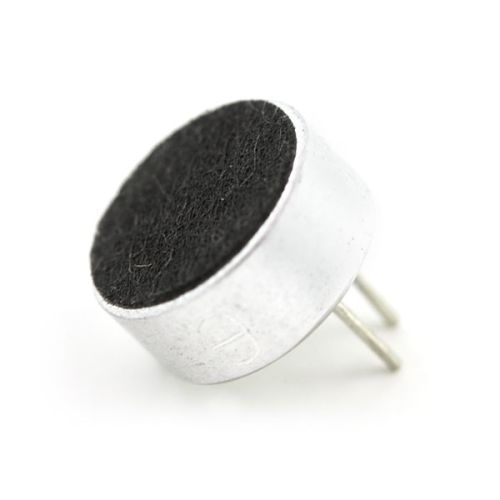This is a placeholder topic for “Electret Microphone” comments.

Small electret microphone. Useful in acoustic and audio applications.
Read moreThis is a placeholder topic for “Electret Microphone” comments.

Small electret microphone. Useful in acoustic and audio applications.
Read moreMy understanding from the datasheet is that this magnetic goblin want’s a cool 1.5v.
USB cables are 5v. I know some micrcontrollers rock a 3.3v vcc. I’ve never seen anything 1.5v (apart from like a AA battery). Where does someone acquire 1.5v from? Can you step down with a resistor?
Hi Jonny,
That is exactly how you would step it down, this board already has it done but we haven’t included the datasheet or schematics for it on our store page. I will make a note to have that actioned but in the meantime I have attached the schematic so you can see how they’ve done it.
Electret_Microphone_Breakout_v20.pdf (28.3 KB)
Thanks Jack! ![]()
The datasheet is asking for a OPA344.
Anything stopping me from substituting it with an LM741?
Hi Pix
I think most hand held Mics with electret transducers have a AA cell in the handle. As does the usual “wireless mic” seen around the stores.
“Phantom power” is another way to get power to these beasties.
Small size and relatively high output makes these attractive for some applications but I don’t think they are used much in “professional” and “semi professional” systems.
Cheers Bob
Hi Pix
An OPA344 works down to 2.7V and is rail to rail (within 1mV) which the 741 isn’t.
Cheers Bob
Hey Bob. ![]()
What is it about being rail-to-rail that makes the OPA344 a better choice as a voltage follower?
Hi Pix
For a start that amp in the breakout linked is NOT a voltage follower. It is an inverting amp with the signal referenced to half rail voltage (R2 an R3) and a gain of 82 times (quite high).
Within 1mV of “rail to rail” means the output can swing to within 1mV of ground and VCC before clipping occurs.
The data sheet for LM741 recommends a supply of ±10V minimum and nominal ±15V and at that the swing is ±13v or 2V less than rail to rail. I think the 741 will work with a single supply and less voltage but it is no where “rail to rail” which will limit the non clipping output level. I have not tried a 741 but I doubt it would work at 5V as this is only effectively ±2,5V.
Cheers Bob
Is that because the feedback loop is also grounded? i.e. if the loop did not go to ground would we call it a voltage follower in that case?
Hi Pix
Don’t quite know what you are talking about here. No feedback loop goes to ground.
This is a voltage follower. Simplicity in itself.